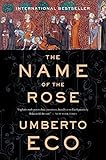For the last two years I’ve worked almost solely from home, meaning I spend most of my days on video calls. The setup of my apartment is such that there are few good places to Zoom. I take most meetings from the hallway near my bedroom, an interior passage where, over a decade ago, my dad and I built shelves for all my books.
Are you in a library? a co-worker once asked me. No, I laughed. Although it does feel like it here sometimes. I’ve also been asked: Is that a fake background? And, perhaps the most common question: How many of those books have you read?
I probably should know the rough ratio of the books I’ve read to the number of books I own. But I don’t. I’ve added and subtracted too many titles over the years. Besides, when it comes to the books a person puts on display, sometimes the actual books themselves are beside the point.
The first proper bookshelf that I ever owned was in a shabby Chicagoland walk-up during my last year of college. The place had bad water and clanky radiators, but I loved it because the mantle of the broken fireplace in my bedroom was perfect for the little cache of novels I had begun to assemble. At that stage in my life the books I owned were signals to be sent as much as texts to be read. Looking at them on the mantle, they conjured a future world where I would be an adult who did meaningful things. For the young and ambitious, it’s almost instinctual to surround yourself with books that prefigure who you intend to be.

 I still own many of the big books from that first line-up: Joyce’s Ulysses, Richard Pevear and Larissa Volokhonsky’s translation of The Brothers Karamazov, and Umberto Eco’s The Name of the Rose. Despite parading them on my shelf, I knew almost nothing about these novels—I had not read them. But my professors and peers I admired spoke of them with reverence, and like a good apprentice I did as I was told when it came to book buying.
I still own many of the big books from that first line-up: Joyce’s Ulysses, Richard Pevear and Larissa Volokhonsky’s translation of The Brothers Karamazov, and Umberto Eco’s The Name of the Rose. Despite parading them on my shelf, I knew almost nothing about these novels—I had not read them. But my professors and peers I admired spoke of them with reverence, and like a good apprentice I did as I was told when it came to book buying.
 A confession that will surprise no one: the books on that first bookshelf were not there for purely intellectual pursuits. I was 20 years old, after all. I flirted with more than one girl by showing off the books in my keep. Why yes, that’s a hardcover copy of The Satanic Verses. Yeah, I’ve read it. It’s actually pretty good. So tell me, what kind of books do you like?
A confession that will surprise no one: the books on that first bookshelf were not there for purely intellectual pursuits. I was 20 years old, after all. I flirted with more than one girl by showing off the books in my keep. Why yes, that’s a hardcover copy of The Satanic Verses. Yeah, I’ve read it. It’s actually pretty good. So tell me, what kind of books do you like?
Skip ahead a few years to a fifth floor walk-up in Brooklyn Heights. By then I had a full-time job and I owned enough (cheap) furniture that I needed help moving into my new place. I paid two burly Eastern European guys to haul my stuff up five flights. They didn’t speak much English, and I don’t remember them saying much except: You have too many books.

 For that Brooklyn apartment I bought two freestanding bookcases for the vestibule,making my books the first thing visitors saw upon entering. I was showy with those bookcases, performative. But that was the stage of life that I was in. I was still collecting anything that looked like it would fit on the shelves of my life, and I was still overeager to show off my learnedness–or more precisely, my hunger for learnedness–to anyone that stopped by. On weekends I’d prowl used bookstores for new additions to my collection. One day I’d bring home something old, like a Brontë. Another day, something borrowed from a friend, like Beloved. Or something blue, like Breakfast of Champions.
For that Brooklyn apartment I bought two freestanding bookcases for the vestibule,making my books the first thing visitors saw upon entering. I was showy with those bookcases, performative. But that was the stage of life that I was in. I was still collecting anything that looked like it would fit on the shelves of my life, and I was still overeager to show off my learnedness–or more precisely, my hunger for learnedness–to anyone that stopped by. On weekends I’d prowl used bookstores for new additions to my collection. One day I’d bring home something old, like a Brontë. Another day, something borrowed from a friend, like Beloved. Or something blue, like Breakfast of Champions.
I worked in the Financial District and often returned home quite late, sometimes because I was at the office toiling away, but usually because I was out with coworkers or friends or both. Stayed out till three or four in the morning. Tired, eyes raw, tipsy, at the far end of a night I’d hike up the stairs, one, two, three, four, five stories and turn the key in the apartment door and there they were, waiting, silent, judgy: my books. Right where I’d left them.
If the books on my first bookshelf were once signals for who I wanted to be, then the books on those Brooklyn shelves were reminders of what I still needed to do. There was in the solemnity of their silence something that made me feel more than a little chastened. I was 26 by then. Had I made any headway on the books I’d intended to read? Had I forgotten all the ambitions I had, in both literature and life? The rows of books were long lines of dares, double dares, triple dares. Get to it, boy, their spines all read.
My Brooklyn roommate had an actress girlfriend who sometimes spent weekdays at our place while my roommate and I were at work. She embarked on a project to read through every book of interest in the vestibule. I said she could read whatever she liked. I admired her determination, but envied how much time she spent with the books I had not gotten around to reading. I moved out before she got through everything.
Not long after I moved out of the Brooklyn apartment, I visited my brother in Austin. All I remember now about his place are the milk crates where he kept his books. He had lots of books—some of them gifts from me—but he didn’t like owning books. It costs more to keep a book, he said, than to buy a new copy every time you want to re-read it. Because how often do you reread most books? I presume he was right about the math, seeing as he’s an engineer. But I didn’t really believe what he was telling me. His equation left out something that can’t be counted. Yet it did do one important thing: it forced me to accept that the books you keep aren’t kept just for reading or rereading.
Two months after our son was born, my wife Raina and I moved into our current apartment in upper Manhattan. Walking with Raina through our new, empty rooms, we asked that age-old question: where to put all our stuff?
For me, the ideal place for the books was a wall near the master bedroom. It was an out of the way spot where guests were unlikely to see the books. The opposite of the primo placement I had wanted for bookcases in apartments past. But I was after something else. In this space, I’d see the bookshelves every day when I went to bed and first thing in the morning when I got up. That was more than enough for me now.
It was a challenge to fit all the books into the narrow passage. Shelving units would crowd the space. Luckily, my dad offered to build custom shelves. When I was a kid, he built the bookshelves in our living room, which was where we stored the full set of encyclopedias that my mom bought, one volume at a time, from the supermarket near our home. For weeks he and I traded emails about the design, placement, and materials. For the first time in at least a decade I had to count how many books I had in order to figure out how many shelves we needed. The final number made me sheepish. That’s all right, he said, when I told him we needed far more shelf space than I originally estimated.
As a kid, I remember my dad lounging on the beach reading mass-market paperbacks—Cussler, Clancy, Grisham. He didn’t pick books to impress people, not that I could tell. He wasn’t the kind of person to cultivate a pretentious bookshelf. He just built them. You read books for yourself; you built shelves to hold things. It didn’t have to be more complicated than that.
To put the new bookshelves together, my dad stayed in our New York apartment for a long weekend. The two of us worked for two long days installing and then pulling out and reinstalling materials. I say we, but really, I just held things; he made measurements, drilled, hammered, and fixed anchors in drywall. If a shelf was wiggly, he’d mutter to himself, Nope. It’s fine, I’d say. He shook his head. You’ve got that little baby, he said. He’s going to climb these shelves when you’re not looking. These have to be strong enough to hold the books and his weight, too.
The end result was, is, beautiful. Six white shelves, each about nine feet long. The first is a foot off the floor and the last is less than two feet from the ceiling. My son is 10 now and the shelves likely wouldn’t hold his weight, but he’s past the age where I worry. I’m not sure what the absolute upper limit is for the number of books the shelves can hold, but I can tell you that it is more than enough for my purposes now.
Thanks to the pandemic, more people see these bookshelves than any other setup I have, now that I work in front of the books on a daily basis. An ironic twist, I suppose, in the long history of all the books I’ve set in a line over my life.
A month ago I culled 52 books from the shelves. Books that I still have not read, or that I read and don’t care to keep. I like the look of the shelves without those books: the revised line of spines now more closely follows the line of my life as it has been lived—what I show on a bookshelf these days is less and less about an imaginary self that I wish I could or should be. I’m not trying to show off what I am reading, not trying to impress anyone. Now my bookshelves remind me of where I’ve been, who I am, and what it’s taken to get here.
The post Shelf Life: On the Stories Our Books Tell About Us appeared first on The Millions.










